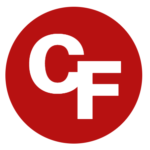Things to know
Canada’s retirement income system consists of a mix of public pensions and private pension and retirement savings plans.
UNIVERSAL GOVERNMENT PENSION BENEFITS
- The Old Age Security program (OAS) provides a basic level of retirement income (up to $631 per month in 2018) to Canadian residents, along with additional support for low-income seniors (up to $898 per month in 2018) through the Guaranteed Income Supplement (GIS).
- These programs are funded from general tax revenues – no employer or employee contributions are required.
- Benefits are gradually clawed back as certain income thresholds are met.
CANADA PENSION PLAN (CPP) AND THE QUÉBEC PENSION PLAN (QPP)
- CPP (or QPP in Québec) provides additional retirement income for workers in Canada. On retirement, CPP/QPP replaces a maximum of 25% of earnings up to the Year’s Maximum Pensionable Earnings (YMPE) ($57,400 in 2018). The pension is based on earnings, years of participation and the retirement age. The maximum benefit in 2018 is $1,154 per month for a person retired at age 65.
- Both employers and employees are required to contribute a percentage of earnings to the CPP (or QPP if employed in Québec) up to the YMPE. The employee must contribute 5.1% of his/her earnings (5.55% in Québec) up to $2,748 per year ($2,910 per year in Québec). The employer is required to contribute an equal amount.
- Many employers design their private retirement plan so as to integrate the benefits that employees will receive under the CPP/QPP and the benefits payable under the employer’s retirement plan (i.e. the contributions required and the benefits payable under the employer plan will take into account CPP/ QPP contributions and benefits).
- CPP and QPP will be enhanced gradually starting in 2019. The income replacement ratio will increase from 25% to 33.33% of pensionable earnings, from the first dollar earned up to an increased YMPE (projected to be equal to roughly $82,700 in 2025). The exact increase will depend on how much and for how long an employee has contributed to the enhanced CPP. A worker will get the full increase after contributing to the enhanced CPP for 40 years.
- Employer and employee contributions will increase in order to fund the enhancements. Increased contributions will be phased in over a seven-year period commencing in 2019.
Things to do
- Employers establishing private pension and retirement savings plans need to consider how to coordinate their plans with public retirement income programs to achieve the desired retirement outcome for their employees.
- In light of the recent CPP/QPP enhancement (and increased employer contributions), employers should assess whether they want to offset these increased employee costs through certain amendments to their pension plans and/or other employee benefit plans (e.g. lower employer contributions to private plans, reduce/eliminate certain benefits; limit salary increases, etc).
Canada Company Registration
Company Formations Canada offers fast and easy company registration in Canada for non-Canadian residents and foreign companies wishing to operate and do business in Canada.
Register a new company in Canada as a non-Canadian resident
https://companyformations.ca/canada-corporations-non-canadian-residents/
Register a foreign company in Canada
https://companyformations.ca/extra-provincial-corporations-licence-outside-canada/
Canada Registered agent services for foreign companies and non-Canadian residents.
https://companyformations.ca/canada-registered-agent-service/
Canada Nominee director services for foreign companies and non-Canadian residents.
Shared from: Osler, Hoskin & Harcourt llp Publication
